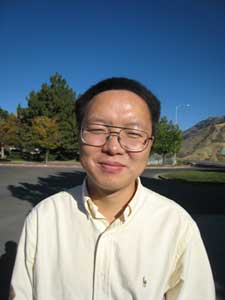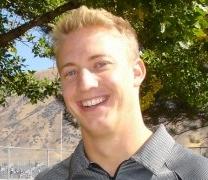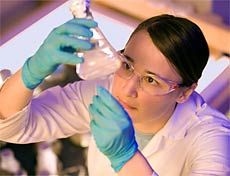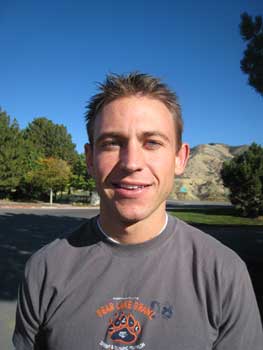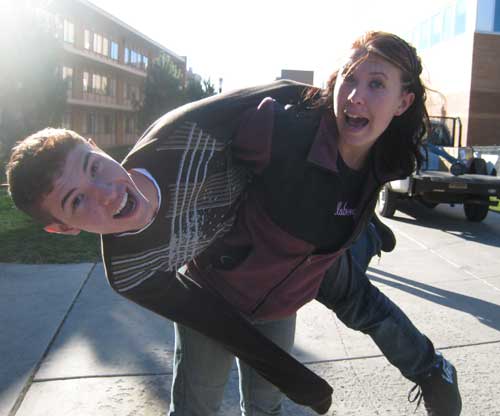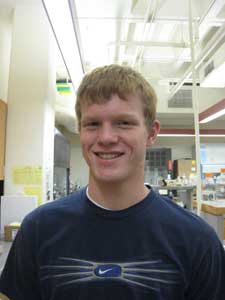From 2008.igem.org
(Difference between revisions)
|
|
| Line 93: |
Line 93: |
| | | | |
| | == '''Where we're from''' == | | == '''Where we're from''' == |
| - | Utah State University is located in beautiful Logan Utah. Logan is about an hour and a half drive from Salt Lake City Utah. The city of Logan is located in the heart of Cache Valley. | + | Utah State University is located in beautiful Logan Utah. Logan is about an hour and a half drive from Salt Lake City Utah (~130 miles). The city of Logan is located in the heart of Cache Valley near the on the western slopes of the Bear River Mountains, the northernmost branch of the Wasatch Range. The city of Logan has a population of approximately 47,000. Logan was established in 1859 and has a rich heritage and wonderful culture. The city of Logan has been stated to be among the safest cities in America. |
Revision as of 01:35, 28 October 2008

|
iGEM 2008 at USU
| The 2008 Utah State University iGEM team consists of a diverse group of individuals. The professors and students have backgrounds in the fields of Biological Engineering, Electrical Engineering, Biology, and Microbiology. The high school students helping with this project are very bright students. They know their way around the lab and have been extraordinarily helpful on this project. Although many of us are from different parts of the country and world we all love Utah State University and Logan Utah.
|
This project was carried out at Utah State University in beautiful Logan, Utah.
The Utah State University iGEM team project is focused on
creating an efficient system for production and monitoring PHA
production in microorganisms. One goal of our research is to develop and
optimize a method, using fluorescent proteins, for the detection of
maximum product yield of polyhydroxybutyrate (PHB, a bioplastic) in
recombinant E. coli and in Cupriavidus necator. In order to develop an
optimal PHB detection system, we focused on the identification of the
most efficient reporter genes, and the best promoter sequences that
would allow our reporter to indicate when PHB production was maximized.
|
|
|
|
|
The 2008 USU Team
|
FACULTY ADVISORS:
- Dean Scott Hinton: Dean of the College of Engineering, USU
- Dr. Charles Miller: Department of Biological and Irrigation Engineering, USU
- Dr. Ronald C. Sims: Department of Biological and Irrigation Engineering, USU
GRADUATE STUDENTS:
- Jun-Ling Huo: PhD student, Department of Biological and Irrigation Engineering
- Steven Merrigan: MS student, Department of Biological and Irrigation Engineering, USU
- Joseph Camire: MS student, Department of Biological and Irrigation Engineering, USU
UNDERGRADUATE STUDENTS:
- Trent Mortensen: "iGem spelled b-i-e, iGem"
- Libbie Linton: Department of Biological and Irrigation Engineering, USU
- Kirsten Sims: Department of Biological and Irrigation Engineering, USU
- Dan Nelson: Department of Biological and Irrigation Engineering, USU
- Rachel Porter: Department of Biological and Irrigation Engineering, USU
HIGH SCHOOL STUDENTS:
- Garrett Hinton: Sky View High School
- Matthew Sims: Logan High School
|
|
What we did
(Provide proper attribution for all work)
Where we're from
Utah State University is located in beautiful Logan Utah. Logan is about an hour and a half drive from Salt Lake City Utah (~130 miles). The city of Logan is located in the heart of Cache Valley near the on the western slopes of the Bear River Mountains, the northernmost branch of the Wasatch Range. The city of Logan has a population of approximately 47,000. Logan was established in 1859 and has a rich heritage and wonderful culture. The city of Logan has been stated to be among the safest cities in America.

 "
"



